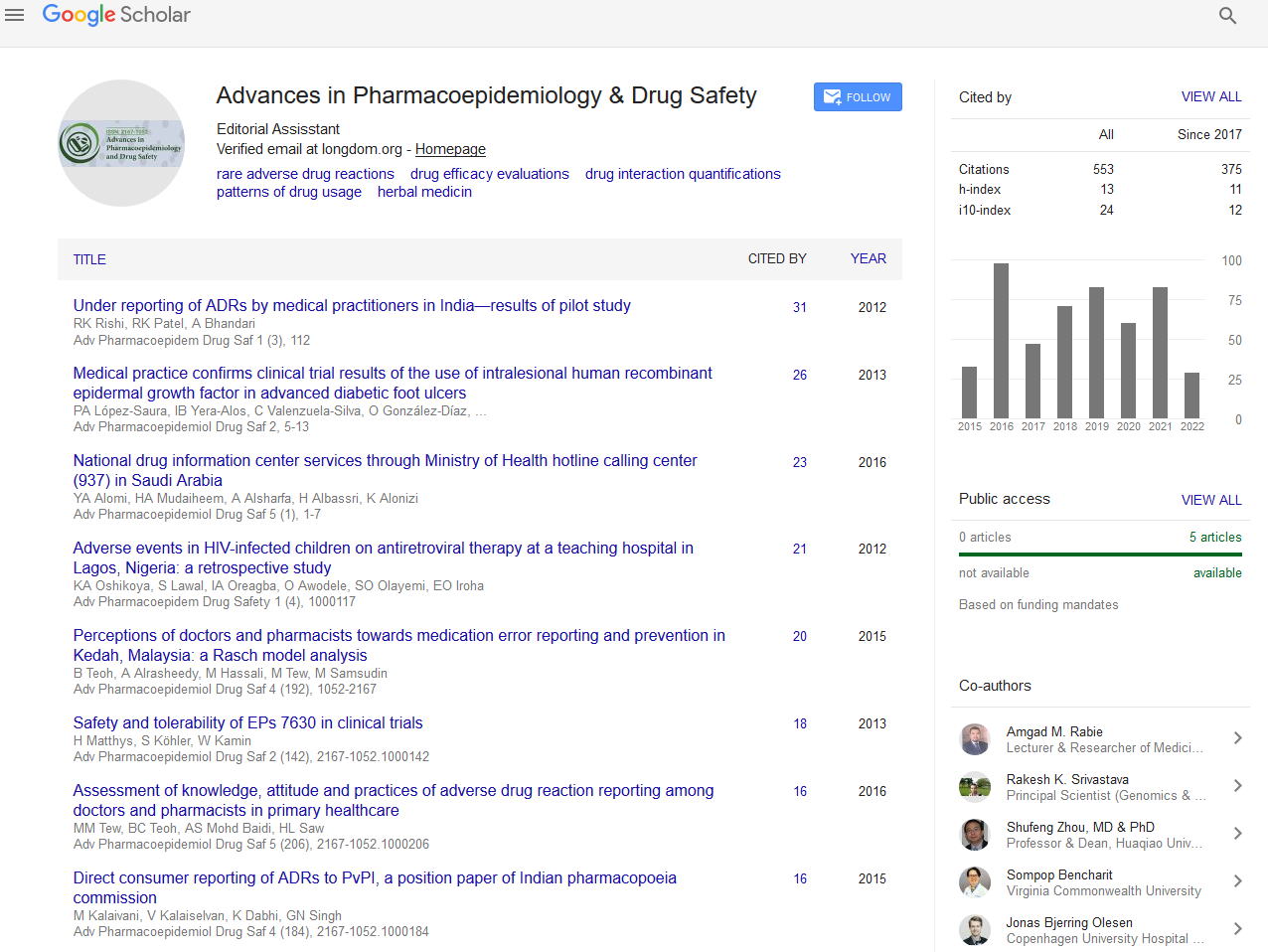Indexed In
- Open J Gate
- Genamics JournalSeek
- Academic Keys
- JournalTOCs
- RefSeek
- Hamdard University
- EBSCO A-Z
- SWB online catalog
- Publons
- Geneva Foundation for Medical Education and Research
- Euro Pub
- Google Scholar
Useful Links
Share This Page
Journal Flyer

Open Access Journals
- Agri and Aquaculture
- Biochemistry
- Bioinformatics & Systems Biology
- Business & Management
- Chemistry
- Clinical Sciences
- Engineering
- Food & Nutrition
- General Science
- Genetics & Molecular Biology
- Immunology & Microbiology
- Medical Sciences
- Neuroscience & Psychology
- Nursing & Health Care
- Pharmaceutical Sciences
Abstract
Acute Hepatitis Caused by Green Tea Infusion: A Case Report
Arzenton E, Magro L, Paon V, Capra F, Apostoli P, Guzzo F, Conforti A and Leone R
The green tea is obtained by an unfermented process of leaves of Camellia sinensis and the main chemical components are polyphenols, particularly epigallocatechin-3-gallate and epicatechin-3-gallate that could be associated to adverse hepatic reactions. We present a case of acute hepatitis caused by the use of green tea.A 62-year-old woman was hospitalized because of the persistent high levels of liver function tests. After the hospitalization a lot of instrumental exams and blood checks were performed. The search of metallic elements in the used green tea infusions was performed using an inductively coupled-plasma mass spectrometry; high performance liquid chromatography-electro spray ionization-mass spectrometry analysis was done to characterize the metabolite profiles of the infusions of green tea. The blood check showed in particular alanine aminotransferase (780 U/L) and total bilirubin (1.15 mg/dL) levels abnormal. The abdominal echography and other blood parameters were normal, but liver biopsy described a “drug toxic damage”. Every day over the previous 9 months the patient drank two or three cups of several brands of green tea infusions and she stopped this behavior when abdominal pain was persistent. Her medical history didn’t report the use of other drugs or toxic products. After four months of stopping the use of green tea infusions, the liver function tests were normalized. The presence of metallic elements in tea infusion cannot justify the observed liver toxicity in our patient. Instead, the highest levels of epigallo catechin methyl gallate derived from epigallocatechin-3-gallate observed in one of the samples consumed by the patient, arise a possible correlation between some of the catechins in green tea and the hepatotoxic effect. It is conceivable that the mechanism of damage can be idiosyncratic-metabolic or allergic.


